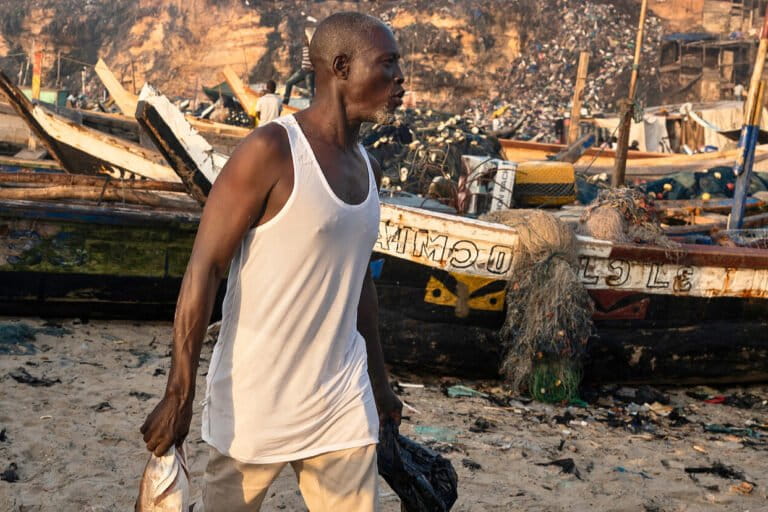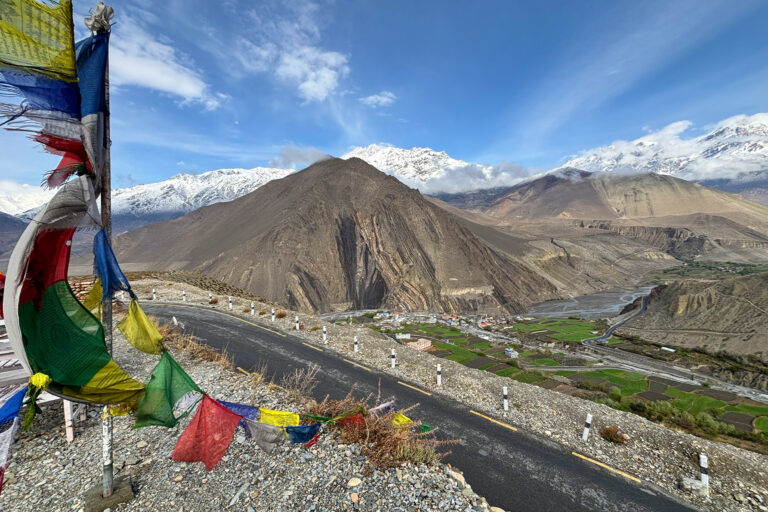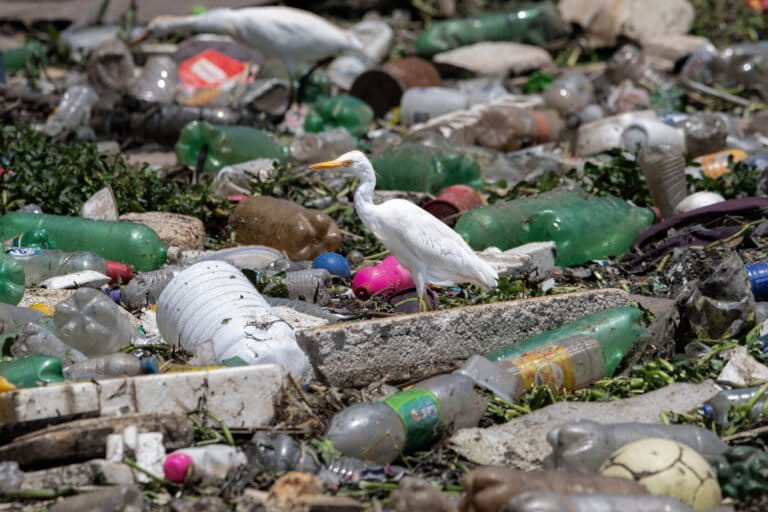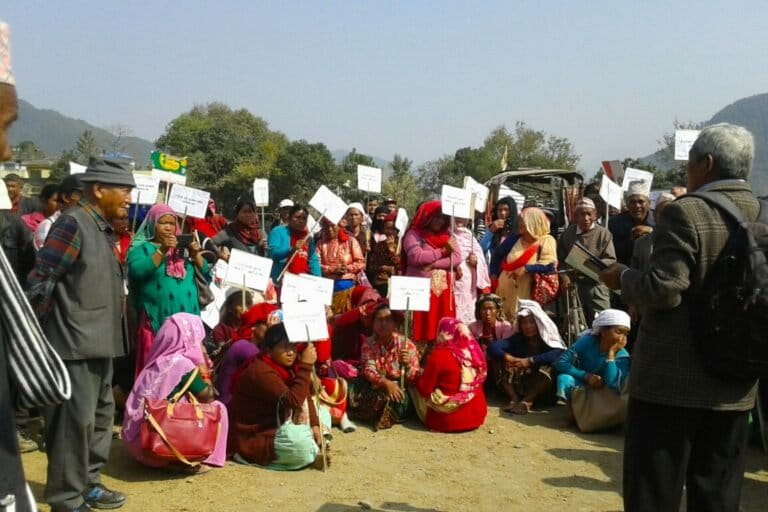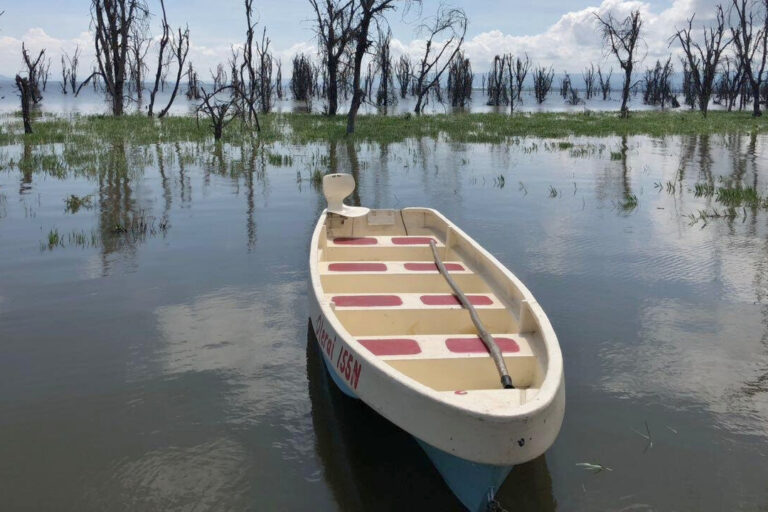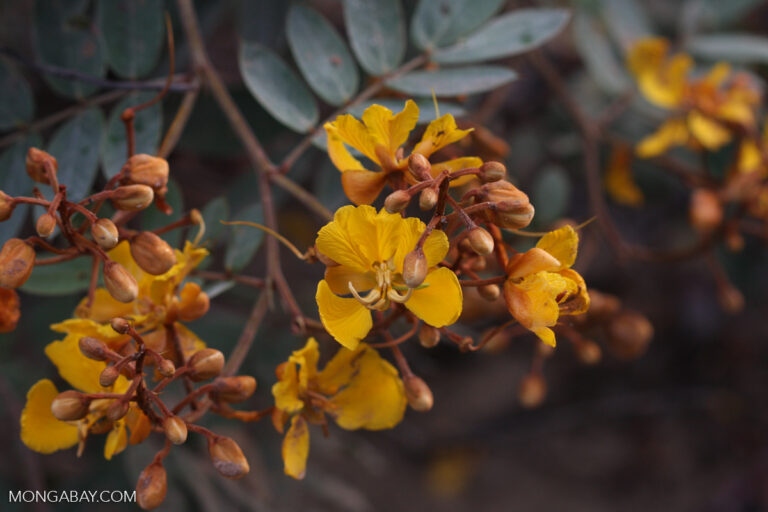- In September 2021, a provincial court gave oil companies 18 months to eliminate gas flaring in the Amazon because of its role in spiking cancer rates among local residents.
- That deadline expired in March, but today oil companies continue to use gas flares more than ever. Before the court ruling, there were an estimated 447 gas flares in the country. Today, there are 475.
- Activists say they still have some legal avenues for pressuring the government to enforce the ban, including impeaching ministers that fail to comply with the court’s order.
A court in Ecuador ordered oil companies to stop the hazardous practice of burning natural gas at extraction sites because it was a major driver of cancer and other illnesses in nearby communities. But nearly two years have passed since that ruling, and oil companies are burning more natural gas than ever.
In September 2021, a provincial court gave oil companies 18 months to eliminate “gas flaring” in the Amazon, most notably in the provinces of Sucumbíos and Orellana, where a lawsuit had been filed by a group of young girls worried about the future of their health. Although that deadline expired at the end of March, oil companies continue to use the flares.
“The state of Ecuador has failed to comply with the ruling and continues to burn gas, violating the rights of the Amazon, the girls and the country,” said Pablo Fajardo, an attorney representing the girls in the lawsuit and the Union of People Affected by Texaco (UDAPT), an advocacy group for victims of oil drilling in the area.
Gas flares look like tall columns emitting fire into the air over oil fields. They’re designed to burn off the excess natural gas produced during oil extraction but also contribute to climate change and pose serious health risks to people who have to breathe it in and drink the water it contaminates.
One study conducted by UDAPT and environmental group Clínica Ambiental found 442 cases of cancer between 2018 and 2022 in oil-producing areas of the Amazon like La Joya de los Sachas, Lago Agrio and Shushufindi. Of those cases, over 72% of them were women.
In February 2020, nine girls filed a lawsuit with a Sucumbíos provincial court claiming the government’s authorization of gas flaring violated their constitutional right to live in a clean and healthy environment. After the lawsuit was struck down, the girls appealed the decision and ended up winning the case in July 2021.

At the time of the decision, a UDAPT study said there were an estimated 447 gas flares in the country. A year later, there were 457, or ten more than there had been before the lawsuit. This year, the count has gone up to 475.
“Instead of decreasing, the number of gas flares keeps increasing,” Fajardo said, adding, “They haven’t shown that they’re eliminating the gas flares or that they have an adequate, coherent plan to eliminate them.”
The Ministry of Energy, the Ministry of Public Health and Non-Renewable Natural Resources and the Ministry of Environment and Water — who the lawsuit was filed against — said at the time that eliminating gas flares would negatively impact the country’s oil production, which represents nearly half of its annual exports.
However, gas flares don’t actually affect oil production rates. It’s just the easiest and most efficient way to dispose of excess natural gas produced from the oil extraction process.
International groups including the World Bank have pointed out that nearly 140 billion cubic meters of gas are wasted every year due to gas flaring. Former President of the state-owned Petroecuador Ítalo Cedeño said last year that Ecuador wastes around $500 million of natural gas that could be used to meet the needs of local residents.
The Ministry of Energy, the Ministry of Public Health and Ministry of Environment and Water didn’t respond to a request for comment for this story.

“The state should worry about the people it’s neglecting,” said Charlie Azcona, an activist and missionary working with victims of gas flaring. “… The government and authorities don’t care.”
Despite what appears to be a failure in the justice system, activists said they still have some legal mechanisms to push the government to enforce the ban, including impeaching ministers that fail to comply with the court’s order.
Similar action can be taken against the judge that issued the order, activists said, since she has so far failed to use all of the tools at her disposal to ensure it’s enforced. The most significant action the court has taken is the creation of a commission to monitor compliance with the order, which activists see as ineffective because it allows the wrongdoers to self-monitor.
Another option activists have is to take the case to the Inter-American Court on Human Rights, which will determine whether the girls’ human rights have been violated.
“I believe this is a slow fight but that it will bear fruit,” Azcona said, “and soon we’ll see the end of the gas flares. The common good will triumph — and the good of nature and human rights.”
Banner image: Gas flares over an oil field in the Ecuadorian Amazon. Photo courtesy of UDAPT.
FEEDBACK: Use this form to send a message to the author of this post. If you want to post a public comment, you can do that at the bottom of the page.







